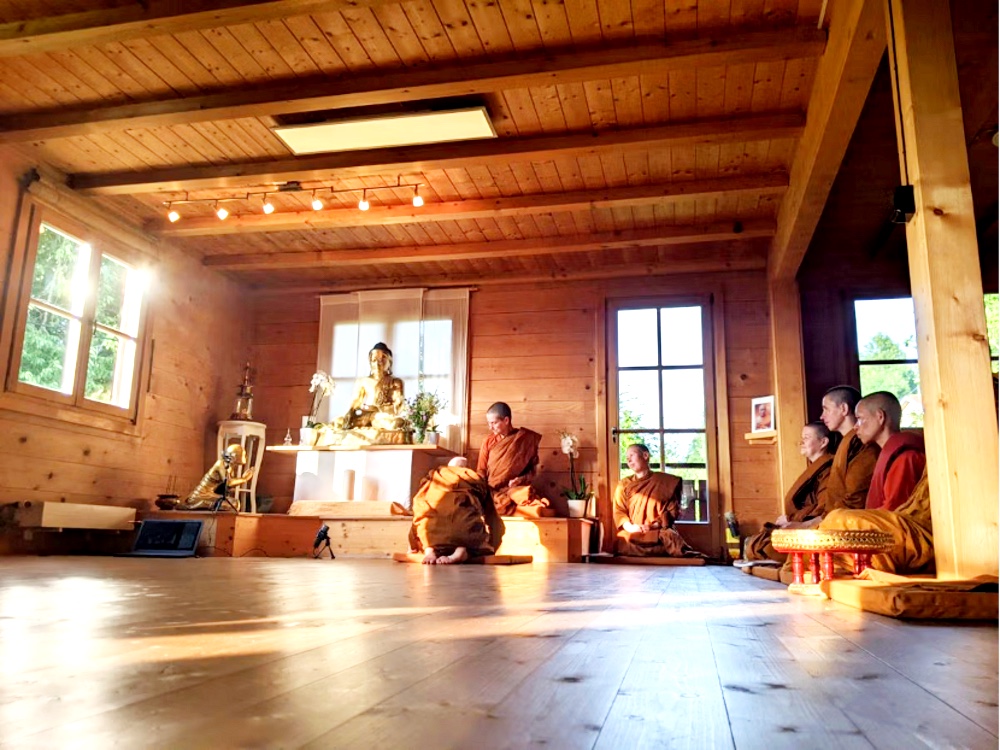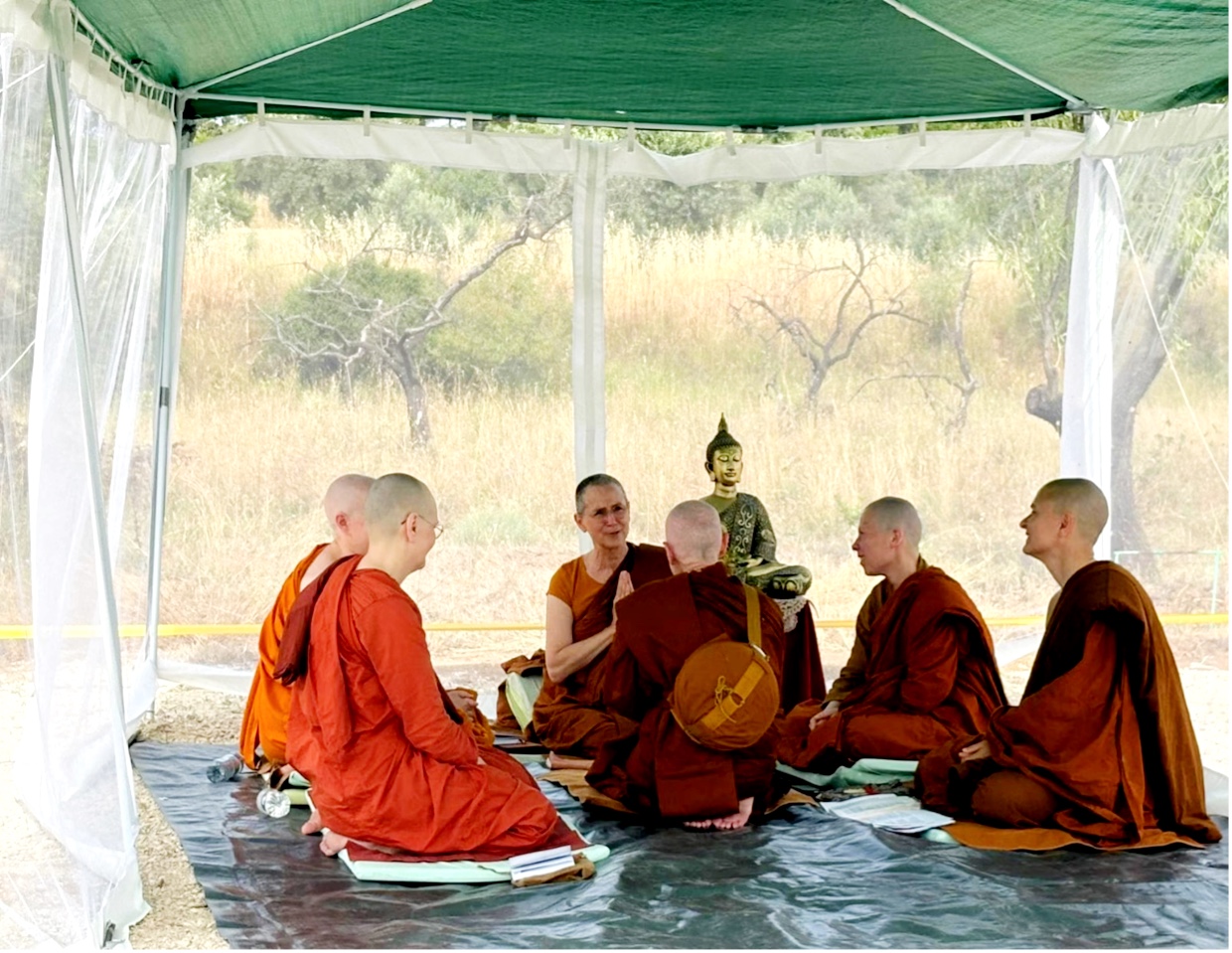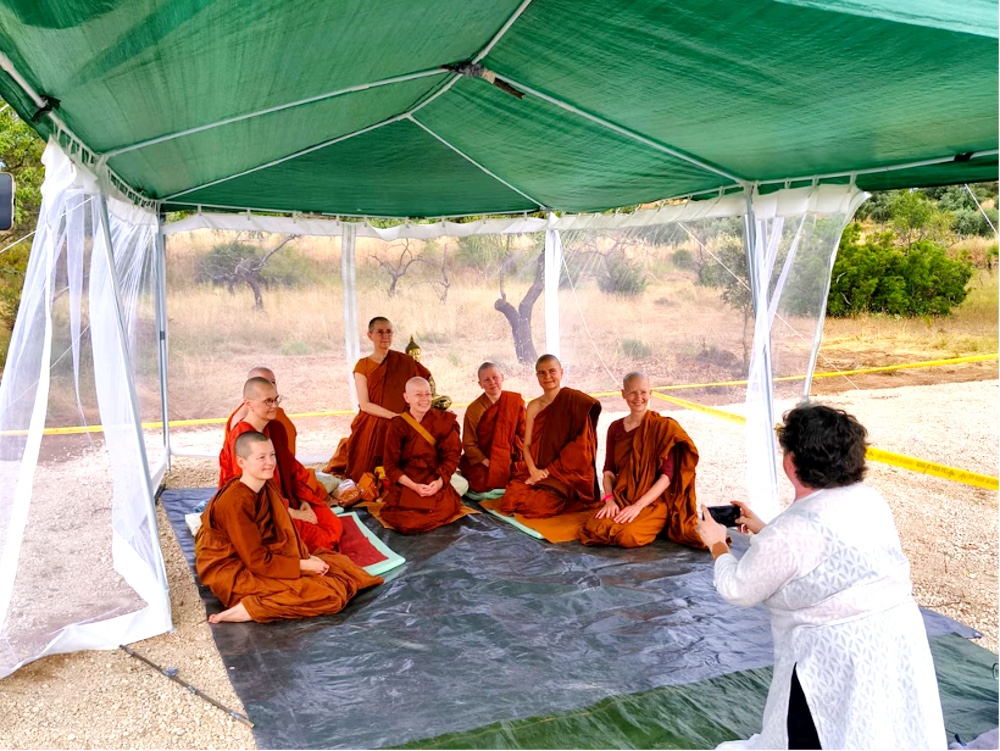When we ask ourselves what Buddhism is and how it might be defined, a host of problems arise. Is it defined by its doctrines? By its practices? By its texts? By its secret teachings? Perhaps by the taking of refuge? But, if so, does taking refuge imply the same thing in all traditions? Obviously, this question can have many and varied answers. But for guidance, it is possible to start with certain institutions that originated around the Buddha himself. One of these flagship institutions is monasticism. At least according to the Theravada tradition, Buddhism without monks and nuns is impossible.

In the Theravada tradition, the monk is called bhikkhu (Sans. bhikṣu, tib. དགེ་སློང "gelong", chi. 比丘) and the nun bhikkhunī (Sans.bhikṣuṇī, tib. དགེ་སློང་མ་ "gelongma", chi. 比丘尼). Literally means one who lives on alms," as opposed to those who earn a living by, for example, producing food on the farm, selling goods or services, or collecting taxes from the above. The Buddha was a bhikkhu and so were many of his human disciples (monasticism is a privilege that the gods do not enjoy). But how does one become a bhikkhu, is it a purely personal decision, does one simply decide to make a radical turn in one's life and "give up everything"? Historically, it seems so. That is, there were more bhikkhus than just Buddhists. Some went on their own and were obviously bhikkhus because they said they were. Who was going to contradict them? In India, the institution of itinerant ascetics goes back to time immemorial. They are part of the social landscape. As they have no fixed residence, they go from place to place and stop at parks outside urban centers, sanctuaries specially dedicated to accommodate them temporarily, called vihāras(later, ironically, the word will come to mean monastery, residence).

In the Buddha's time, there were among these itinerant ascetics some famous masters, and each of these masters had his community of disciples. All these communities had some kind of ritual or initiatory formula for ordaining a new member of the community. This implied that the bhikkhu would thereafter be under the tutelage of the master and would have the privilege of being able to develop further in the community.
Initially, ordination was done in two times. The first is called pabbajā, which is to leave home, to renounce the home life in order to make the life of the itinerant ascetic. This is what today corresponds to the novitiate. Formal renunciation or sometimes called "higher" is upasampadā, which literally means "admission" into the Sangha (the Community). In an ancient Buddhist book called Milinda Pañha, a king of Greek lineage asks a monk, "How did the Buddha become bhikkhu if there was no teacher before him? Who ordained him?" The monk replies that the Buddha became bhikkhu at the very moment of enlightenment under the tree of awakening.
In the Buddha's time, the texts tell us, ordinations were not as complicated as they are today: the Buddha would simply say to a person "come, bhikkhu"(ehi bhikkhu). Just like that! This simple and gentle formula is reminiscent of one of the qualities of the Dhamma, the Buddha's teaching, which is described in Pali as ehipassiko. This is an adjective formed by two verbs: ehi "come" and passa "look". The Dhamma invites to be examined and in the same way the Buddhist community invites practitioners to join it to see and see what the most refined practice of the teaching is like, in the life of retreat and detachment that the condition of the bhikkhu or bhikkhunī entails.
There is no doubt, then, that the continuity of monastic masters and disciples, beginning with the Buddha, serves as a yardstick for measuring the presence of Buddhism anywhere. And if this is so, it could be said that Theravada Buddhism had not arrived in Spain until June of this year. It has taken two thousand five hundred years for the Theravada lineage to travel the nearly seven thousand kilometers from the Ganges basin to the humble Ebro basin. We should celebrate this event as a milestone and congratulate ourselves that Bhikkhunī Arindamā is the first representative of the Theravada monastic lineage in Spain. Her name, Arindamā, means she who tames enemies, or she who overcomes obstacles. It could not be more appropriate, for if anything characterizes the master Arindamā it is her ability to overcome obstacles and setbacks.

Until the day of his ordination, Bhikkhunī Arindamā was Sāmaṇerī Arindamā. The word sāmaṇerī means "novice." As we have said above, the older procedure of ordination involves a few years of novitiate before higher ordination (it is like a probationary period). As of now she is already the first Theravada nun ordained on Spanish soil and will be in charge of the two centers of the monastery, both the one for short retreats in Valderrobres and the future place for long retreats in Calaceite.
In Buddhistdoor in Spanish we have talked a few times about the project of Arindamā and his community Saraṇa Vihāra.Although this community began in Montseny, it is now established in the region of Matarraña, in Teruel. The monastery has a center in the old town of Valderrobres where for more than a year they have been doing short meditation retreats and daily practice. The women who train to become bhikkhunis and long-stay volunteers also live there. The center has been growing little by little thanks to the help of volunteers from all over the world, both practitioners and monastics, and even curious onlookers and sympathizers who passed by and were pleasantly surprised to see a Buddhist nun walking through the narrow streets of the old town of Valderrobres.
The monastery's most important project in the region is Saraṇa Vana (Forest Refuge), a center for the formation of bhikkhunīs, suitable for long and short retreats, located in the town of Calaceite. The project is currently approved, but is pending final permits. If this project is successful, the long-stay retreat center will be able to accommodate ten meditators, each with their individual hut, in a beautiful setting of almond, pine and olive trees, near the massif of the Puertos de Beceite. An ideal place to find peace and to be able to make a life of retreat that is not only a temporary escape from routine, but that becomes a routine and can lead to a permanent escape from suffering.
It was precisely in the bucolic grounds of Saraṇa Vana, still unbuilt, that on the morning of June 25, 2025, amidst olive and almond groves, Samaṇerī Arindamā was ordained as Bhikkhunī Arindamā. Admittedly, the ordination was not fully confirmed until July 8, when a ceremony with bhikkhus was held at Muttodaya monastery in Germany. But the ceremony among bhikkhunīs, the first in the history of our country, was held before a small group of friends and practitioners of Saraṇa Vihāra.
The ceremony began at approximately 8:30 in the morning. As can be seen in the photographs and video, the ceremony essentially consists of a dialogue. Tradition dictates that this ceremonial dialogue continues to take place in Pali, the Indian language spoken by the Buddha (or perhaps a very close dialect). For the ordination of a monk or nun, at least five monks or nuns respectively are required. In the dialogue, the preceptress(upajjhāya), in this case the teacher Ayya Phalañāṇī, accompanied by four bhikkhunīs, exchanges questions and answers with Arindamā. Some of the questions may seem to this day somewhat quaint, as for example when the teacher asks the pupil if she is a hermaphrodite, if she has leprosy or tuberculosis. She even asks her if she is human! This indicates that the text still in use is of venerable antiquity, as these types of questions were relevant to Indian society in the 5th century BC. Interestingly there are also other questions that are very topical, such as "Are you a free woman?" or "Are you free of debt?". Ironically, archaic questions sometimes seem easier to answer.
In the dialogue, the pupil(saddhivihārinī "she who cohabits [with her teacher]") respectfully introduces herself as a candidate and with the legal formulas of the Vinaya asks for a "support" or "dependence"(nissaya) on her preceptress. Although a relationship of hierarchy is obviously established, the "dependence" does not consist in a subordination of the pupil to her preceptress, but rather in being able to count on the support and modeling of the preceptress for her first two years in monasticism. In one of the exchanges, student and teacher promise to take care of each other. The Pali term is bhāra, which means, literally, "burden" or "burden," and here means "responsibility" or "commitment." For like many other solemn engagements, that of the spiritual life, perhaps all the more so, requires this kind of procedure, the ceremonial necessary to make the transaction legal and accepted by all parties. The teacher then offers him the only properties of Ayya Arindamā from now on: an alms bowl, a set of three ochre robes, a vest and a towel. (If you are ever in doubt about what to give a monk or nun, of whatever tradition, give ochre or saffron robes. You're sure to get it right!).
The ceremony ended at about ten o'clock and the bhikkhunīs set off for the monastic lunch, as the last meal of the day is before noon. Those of us there present rose from our cushions and greeted each other briefly. In total we were about twenty or twenty-five people, including regional press from Teruel. Before returning to the village we stopped for a moment to examine the plans of the future meditation center, with its ten little cabins and its main hall for meditation. It is easy to imagine a community of silent practitioners in a place of such beauty and tranquility. We wish Bhikkhunī Arindamā all the best in this new stage of his life. Those who wish to participate in Ayya Arindamā's ordination still have the opportunity to join the official celebration on September 27, 2025, in person or remotely. It will take place at the Casa de l'spiritualitat, in Barcelona(https://sakyadhitaspain.org/celebracion-historica-ordenacion-de-la-bhikkhuni-arindama/). The event is organized by Sakyadhita Spain and will be attended by Guelongma Lama Tsondru, Silvia Palau and Muntsa Castellà, as well as, obviously, Ayya Arindamā herself.










